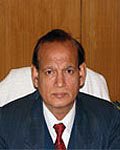Dear Editor
Neonatal health care is concerned with the condition of the newborn from birth to 4 weeks (28 days) of age. Neonatal survival is a very sensitive indicator of population growth and socio-economic development. The survival rate of female infants correlates to subsequent population replacement. For these reasons, the issue of neonatal deaths is a serious national health concern, especially in developing countries where 96% of the world's approximate 5 million annual neonatal deaths occur1.
Each year in India over one million newborns die before they complete their first month of life, accounting for 30% of the world's neonatal deaths2. India's current neonatal mortality rate of 44 per 1000 live births represents 1.2 million children who die each year. Neonatal mortality is higher in rural areas at 49 per 1000 live births (vs 27/1000 in urban areas). The neonatal mortality rate also varies considerably among Indian states. Orissa and Madhya Pradesh have the highest neonatal mortality rates of 61 (rural 63, urban 42) and 59 (rural 63, urban 40) per 1000 live births, respectively. In Uttar Pradesh the rate is 53/1000 (rural 56, urban 39), and 31/1000 (rural 33, urban 21) in West Bengal. Kerala has the lowest neonatal mortality of 10/1000((rural 10, urban 9), followed by Punjab 29/1000 (rural 32, urban 19)3.
As well as targeting a reduction in infant mortality, the Government of India is committed to reducing the neonatal mortality rate to approximately 20/1000 live births by 20104. However, this aim requires the consideration of many contributing elements. Maternal factors that contribute to neonatal mortality have their origin long before the baby is born. The design of strategies to address this element necessitates the collation of information on maternal health and women's status throughout women's early (high risk of neonatal mortality among mothers less than 20 years of age) and reproductive life, which are typically difficult to obtain.
Two-thirds of infant deaths in India occur in the first month of life (with one-third of all neonatal deaths associated with low birth weight); approximately three-quarters of Indian neonatal deaths occur within one week of birth while 90% occur within the first 2 weeks of life5. A major challenge in Indian rural areas is that most births take place at home, assisted by untrained personnel6. As well as the risks associated with the use of traditional birth attendants7, the environment into which a child is born also influences survival. It is, therefore, important to know about risk factors such as the smoking of parents and unsafe water and sanitation, as well as specific neonatal disease and injury factors, such as diarrhea, neonatal sepsis, pneumonia or neonatal jaundice.
Finally, reports of neonatal deaths in India are often subsumed by the more often used indices of infant and child mortality, making it difficult to define the scope of the problem and design effective strategies. In order to address this fundamental national health concern, we call for strategies to be framed that clearly identify the incidence of, and influences on, neonatal deaths in India, with a specific focus on defining the problem in rural areas.
Dinesh Kumar, MSc
Senior Research Officer
Arvind Verma, PhD
Research Assistant
Department of Biostatistics
Regional Medical Research Centre for Tribals
Indian Council of Medical Research
Jabalpur, India
Vijai Kumar Sehgal, PhD
Professor in Statistics
Department of Mathematical Science and Computer Application
Bundelkhand University
Jhansi, India
References
1. World Health Organization. The World Health Report: Fighting Diseases and Fostering Development. Geneva: WHO, 1996.
2. USAID. Maternal and Child Health - 2004. USAID Battles Neonatal Deaths in India. (Online) 2005: 48. Available: http://www.usaid.gov/our_work/global_health/home/News/ghachievements.html (Accessed: 1 November 2007).
3. Health Monitor Foundation for Research in Health Systems. Neonatal mortality by residence, SRS, India and bigger states, 2000. (Online) 2004. Available: http://www.frhsindia.org/docs/Health_Monitor_2004.pdf (Accessed: 1 November 2007).
4. Government of India. National population policy - India (2000): national socio-demographic goals for 2010. (Online) 2000. Available: http://populationcommission.nic.in/npp_obj.htm#box2 (Accessed 1 November 2007).
5. Sharma RK. Newborn health among tribes of Madhya Pradesh - an overview. (Online) 2007. RMRCT Update 4. Available: http://icmr.nic.in/000519/updatevol4no1.pdf (Accessed 12 November 2007).
6. Reproductive and Child Health Project. Rapid Household Survey, Phase I & II. Mumbai, India: International Institute of Population Sciences, 1999.
7. Zupan J. Perinatal mortality in developing countries. New England Journal of Medicine 2005; 352: 2047-2048.



